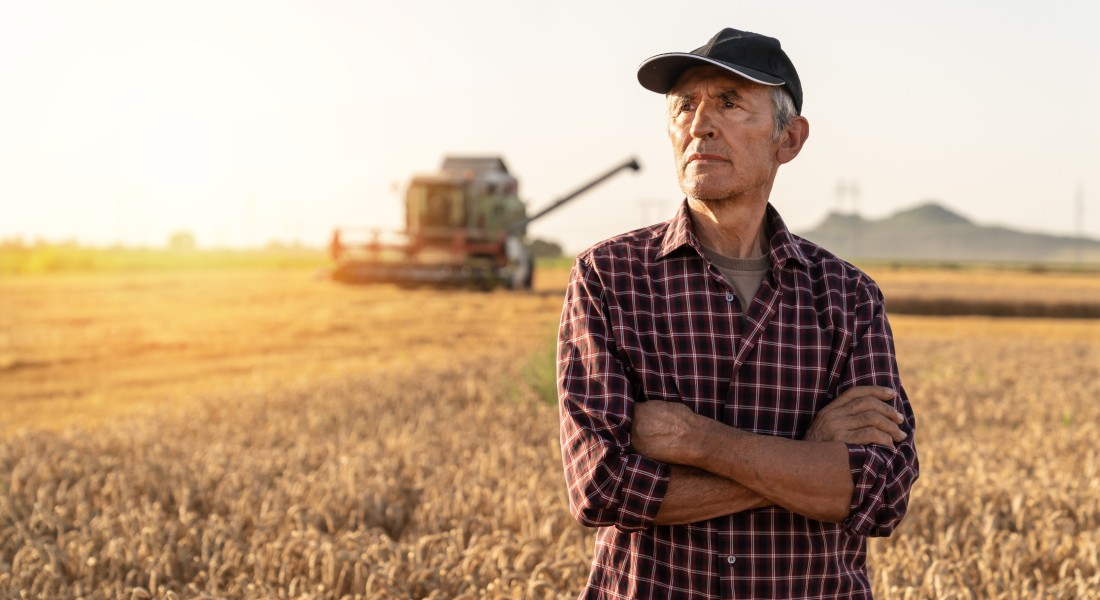Farmers' share of food prices has fallen
The path from farm to fork is getting longer and longer on a global scale. In fact, most of what we pay for food doesn’t go to those who grow or raise foods, but to food processors, packagers, transporters and others. An ever-extending food value chain could have consequences for the working conditions and environment of the future, according to a new study by researchers at the University of Copenhagen and colleagues.

Europe seeks to become the first climate-neutral continent by 2050. A cornerstone of this aim is a new farm-to-fork strategy to improve our food chain. Reducing CO2 emissions and improving public health require easier access to fresh, sustainable and less-processed foods, according to the European Commission.
Nevertheless, despite hopes for a shorter farm-to-fork trajectory, things have only gone in one direction for the food value chain in recent years. It's getting longer.
A new study by University of Copenhagen and fellow researchers examines how much of what consumers pay for food goes to farmers around the world, compared to the rest of the food value chain (FVC), which includes processing, packaging, transportation and supermarket or restaurant sales beyond the farm gate.
"We can see that the farmer's share of the food value chain in high- and middle-income countries on average has shrunk between 16 and 38 percent in the years between 2005 and 2015 as countries become wealthier. In lower-income countries, the proportion of food eaten away from home is increasing as well, while more and more processed foods are being purchased. This contributes to more packaging, processing and transportation," explains Eva-Marie Meemken, an assistant professor at UCPH’s Department of Food and Resource Economics and a co-author of the study.
Today, farmers receive on average 27 percent of the total consumer price for a food product, which thereby means that the largest part of the share goes to processes after the farmer has let go of the product.
"Generally, as people get more money in their hands, the food chain becomes longer as consumers demand higher quality in terms of food safety, packaging, fast delivery and access to readymade meals. Consequently, the farmers' share of the pie naturally becomes smaller," she elaborates.
Together with researchers from Cornell University and US. Department of Agriculture, Eva-Marie Meemken has examined data from food value chains in 61 countries worldwide. Together, these countries account for 90 percent of the global economy.
A longer chain has consequences
The researchers did not look at the potential economic impact of farmers' declining share in the consumer price of foods. However, they point out that a smaller proportion of the total price does not necessarily mean that farmers will suffer personal financial losses, as the overall consumer price of foods is not certain to be decreasing.
According to Eva-Marie Meemken, the ever-growing food value chain presents both opportunities and challenges which ought to be taken into account by decision-makers.
"As the chain lengthens, more jobs are created. This is particularly helpful in lower-income countries where unemployment is high in some places. However, at the same time, working conditions in the food sector are often problematic, with low wages, poor occupational safety and a lack of sick-day and holiday compensation. We should also strive to understand the environmental impact of a longer food chain and how we can politically ensure sustainable production," she concludes.
Contact
Eva-Marie Meemken
Assistant Professor, Tenure Track
Department of Food and Resource Economics
University of Copenhagen
+45 35 32 67 70, emm@ifro.ku.dk
Ida Eriksen
Journalist
Faculty of Science
University of Copenhagen
+45 93 51 60 02
ier@science.ku.dk
